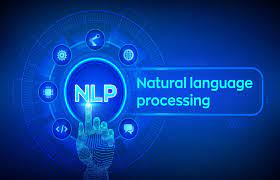Content
Native data types are simple types of information that are recognised by C++ without the inclusion of additional libraries. Data can be represented as numeric , alphabetic characters , and logical values . In the above example, the fixed manipulator of the C++ standard library is used to set the number of significant digits to 5, by specifying the precision. The precision of a double type and an exponential value is set using the fixed manipulator. The setprecision() method in C++ is used to set the precision of floating points up to a certain number of significant digits. It provides a way to control the number of floating points. It is mainly useful in cases where the resulting number is irrational and repeating, i.e., where the decimal points repeat themselves after reaching a certain point.
In this statement, an enumeration data-type country , consisting of enumerators US, UN and so on, is declared. Note that these enumerators represent integer values, so any arithmetic operation can be performed on them. Simply add the keyword const before the data type during declaration to make the variable not modifiable. Bool is a type for storing true or false boolean values.
Arrays
In practice, char is usually 8 bits in size and short is usually 16 bits in size . This holds true for platforms as diverse as 1990s SunOS4 Unix, Microsoft MS-DOS, modern Linux, and Microchip MCC18 for embedded 8-bit PIC microcontrollers. Dinesh Thakur holds an B.C.A, MCDBA, MCSD certifications. Where he writes how-to guides around Computer fundamental , computer software, Computer programming, and web apps. Though the enumerations are treated as integers internally in C++, the compiler issues a warning, if an int value is assigned to an enum type.
Who developed C++ language?
Stroustrup's C++ built upon the C programming language, developed by Dennis Ritchie at Bell Labs. Bjarne Stroustrup joined the 1127 Computing Science Research Center of AT&T Bell Laboratories in 1979.
Next, you learned a few rules and regulations that you must keep in mind while declaring double data types in C++. Moving ahead, you saw how and where you can use the double type with a few examples. You understood the fundamental difference between the double and float data types and used the set precision method to set the number of precision digits in a double value. In the end, you learned how to use another variation of double called long double to store even larger double data types. Predominantly, there are three major categories of data types in C++ – primary, derived, and user-defined data types.
Learn C++
Data types should be defined before the execution as it informs the compiler of the type of data specific variables holds. Integer data type can hold only integer values, it cannot hold the float values or string values. A double variable can store a floating-point value of precision of up to 15 digits. The precision can be set by specifying the number of significant decimal digits. The following examples illustrate some of the most common approaches to format double variables to different precisions. The basic data types provided by c++ are integral, floating point and void data type.
Is Excel written in C++?
Microsoft products like Word, Excel, Powerpoint have been written in both C and C++.
Exact-width integer types that are guaranteed to have the same number n of bits across all implementations. The actual size and behavior of floating-point types also vary by implementation. The only requirement is that long double is not smaller than double, which is not smaller than float. Usually, the 32-bit and 64-bit IEEE 754 binary floating-point formats are used for float and double respectively. Here, we also have the concept of signed, unsigned, short and long.
C++ Program to Determine the Data Type Range Using Macro Constants
Signed values give us the numbers of both below and above zero, which is both positive and negative. Whereas the unsigned values contain data that is only positive. And coming to short and long, through the names itself we can clearly interpret that long data modifier has the capacity to store large amounts of values. And in fact, short is the data type must and will hold a minimum of those numbers of values.
- Moreover, it also helps in making machine-dependent programs more portable.
- The value of the float variable ends with an “f” suffix because the compiler by default treats all values as double.
- Once an enum type is declared, its variables can be declared using this statement.
Without declaring variables with specific data types, we cannot know the exact memory allocations and what set of instructions that a program has to do. Practice and try using different data types with data modifiers and check out how they are behaving too. To sum up, in this article you learned about one of the most popular and widely used primitive data types in C++ called the double data type. The double data type is used to store floating-point numbers and you can even define the precision using appropriate methods. You learned the syntax for creating a double data type and saw how the double data type works. C++ provides a typedef feature that allows to define new data type names for existing data types that may be built-in, derived or user-defined data types.
C++ – Default Arguments
A type cast is basically a conversion from one type to another. It can store up to 15 decimal points without rounding them off. Here is an example that will output the correct size of various data kinds on your computer.
In this declaration, a new name integer is given to the data type into This new name now can be used to declare integer variables as shown here. Characters typically require 1 byte of memory space and range from -128 to 127. An integer typically requires 4 bytes of memory space and ranges from -2³¹ to 2³¹. When you perform the division or multiplication operation, both the numbers should be of the double data type or else there could be a loss of some data. The data type void is used for functions that do not return any values.
In other languages
These experts will be available with you throughout your journey to solve your queries. Float has comparatively less precision and is used to store decimal numbers with fewer digits. When you declare a variable as double, you should initialize it with a decimal value. A valueless entity is represented by the void data type. The word bool is used to describe the Boolean data type. Before C++98, the char type was undefined in regard to its ability to represent negative numbers.
Logic or Boolean values are stored using the boolean data type. The primitive data types offered by C++ are discussed in this tutorial. Unsigned short intint≥ 16, ≥ size of shortRepresents the “normal” size of data the processor deals with (the word-size); this is the integral data-type used normally. Short int, signed short, signed short intunsigned shortsame as shortCan store integers in the range 0 ~ portably. A char will represent the same values as either signed char or unsigned char as defined by the implementation. Maximum-width integer types that are guaranteed to be the largest integer type in the implementation. Generally, the double type is used as it is more precise and prevents a loss of data in terms of significant digits.









